Discover 10 hidden attractions, cool sights, and unusual things to do in Riverhead (United States). Don't miss out on these must-see attractions: Long Island Aquarium, Railroad Museum of Long Island, and Vail-Leavitt Music Hall. Also, be sure to include Benson House in your itinerary.
Below, you can find the list of the most amazing places you should visit in Riverhead (New York).
Table of Contents
Long Island Aquarium
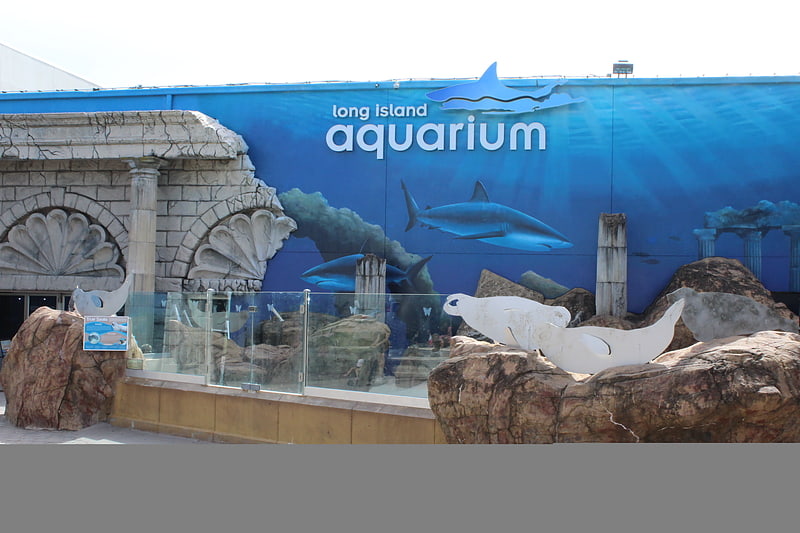
Shark and sea lion shows plus boat rides. Long Island Aquarium is an aquarium that opened in 2000 on Long Island in Riverhead, New York, United States.
One of its biggest attractions is a 20,000-US-gallon (76,000 l) coral reef display tank, which is one of the largest all-living coral displays in the Western Hemisphere.[1]
Address: 431 E Main St, 11901 Riverhead (Northfork)
Railroad Museum of Long Island
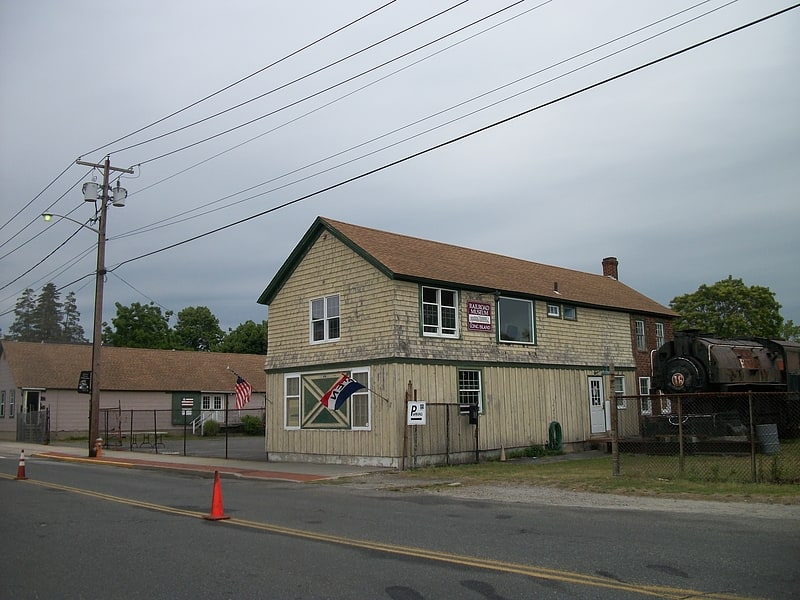
Museum in Riverhead, New York. The Railroad Museum of Long Island is a railway museum based on the North Fork, of Long Island, New York, in the United States. It has two locations, a main location in Riverhead, and a satellite location in Greenport, west of the North Ferry to Shelter Island. Both facilities contain active model railroad displays and gift shops.[2]
Address: 416 Griffing Ave, 11901-3012 Riverhead (Northfork)
Vail-Leavitt Music Hall
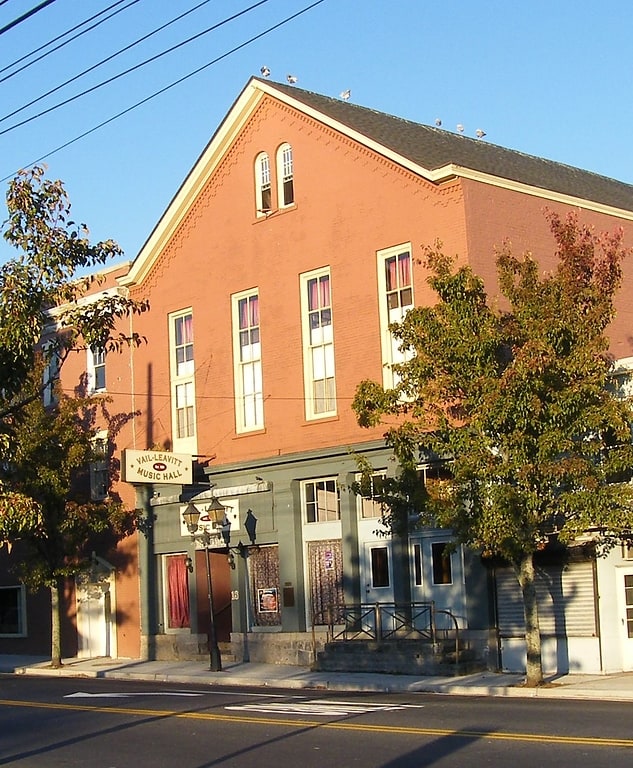
Theater in Riverhead, New York. The Vail-Leavitt Music Hall is a late nineteenth-century theater presently in use on the east end of Long island in Riverhead, New York. The building was built by David F. Vail, with the help of his son George M. Vail in 1881. David was a local lumber dealer in the Riverhead and Eastern Suffolk County Long Island area.
The theater/music hall opened on October 11, 1881. The main theater and its balcony are a miniature opera house designed by J. W. Flack. The ground floor of the building housed commercial business storefronts, while the upstairs contained the opera house. The music hall began its operations with candle lighting, however the Vail's began operating a gas plant behind the theater. As a result, gas fixtures were placed all along the horseshoe balcony, and gaslight continued at the music hall until the advent of electricity to the area in July 1888, when the venue added electric lights.
In 1908, George M. Vail, now sole owner of Music Hall, sold the building to Simon Leavitt, a tailor and clothier, who leased out the upstairs as a theatrical venue. In 1914, the Music Hall was used by Thomas Edison as a demonstration site for kinetophone, an early attempt at the synchronization of sound and film.
As more modern theaters were built in the area, the Music Hall was converted for use over the years as a restaurant, a roller skating rink and even a betting parlor. However, the balcony and stage proscenium remained intact throughout the conversions. Eventually Theodore Leavitt (Simon's son) took over the clothier business and closed the upstairs, using it only as a storage area until his retirement in the 1970s.
After his death, Theodore Leavitt's widow Mollie Leavitt owned the music hall until its acquisition by the Council for the Vail-Leavitt Music Hall in 1982 through a grant from the U.S. Department of Housing and Urban Development arranged by the Town of Riverhead's Community Development officer, Robert Schemer. The Council is a not-for-profit 501(c)3 charitable corporation which now oversees and operates the venue.
From the early eighties to the late nineties, old movies were shown on a small screen in its downstairs space, dubbed the "Mini-Cine". These movie showings helped the theater raise monies for the music hall's restoration. The theater has been listed on the National Register of Historic Places since August 25, 1983.
The music hall held its grand re-opening on June 28, 2003. It continues to host numerous cultural, civic and charitable events throughout the year for the local community.[3]
Address: 18 Peconic Ave, Riverhead (Northfork)
Benson House
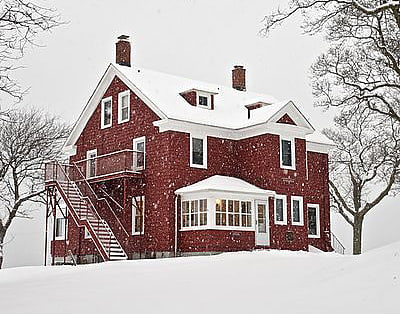
Historical place in Wading River, New York. The Benson House, listed on the National Register of Historic Places as the Wading River Radio Station, is a three-story, red-shingled wood-frame home in Wading River, New York, situated on the North Shore of Long Island, on a 150-foot-high bluff overlooking Long Island Sound. From 1942 until 1945 it housed an important World War II counterintelligence operation, designed to deceive Germany and Japan about Allied war plans.
In 2018 New York's Historic Preservation Board nominated it to the National Register; it was listed later that year.[4]
Jamesport Meeting House
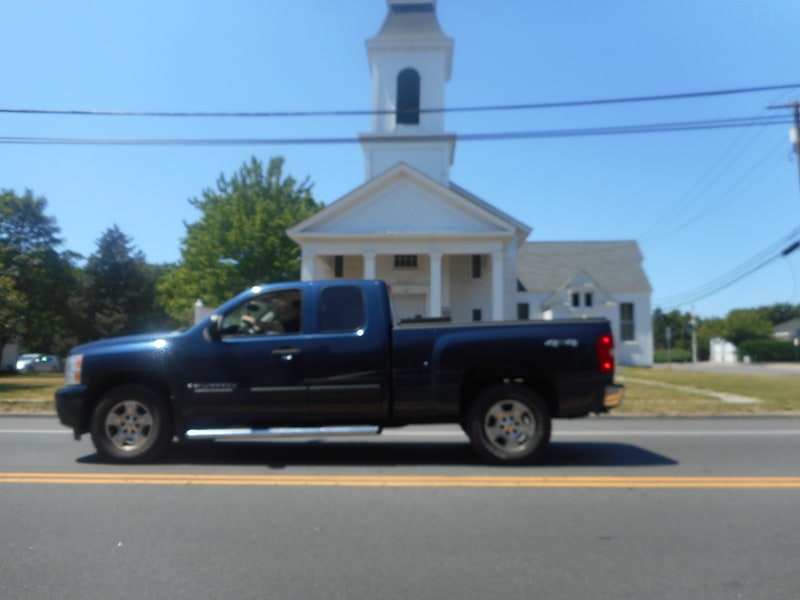
Building in Jamesport, New York. Jamesport Meeting House is a historic meeting house located at Jamesport in Suffolk County, New York. It is in the form of a 2-story gable-fronted building with a 1+1⁄2-story wing to the east. It features an open bell tower topped by a two-tiered, four-sided Mansard roof.
It was added to the National Register of Historic Places in 2009.[5]
Address: 1601 Main Rd, 11947 Jamesport (Northfork)
Hallockville Museum Farm

History museum, Farm, Museum
Address: 6038 Sound Ave, 11901-5609 Riverhead (Northfork)
Hallock Homestead
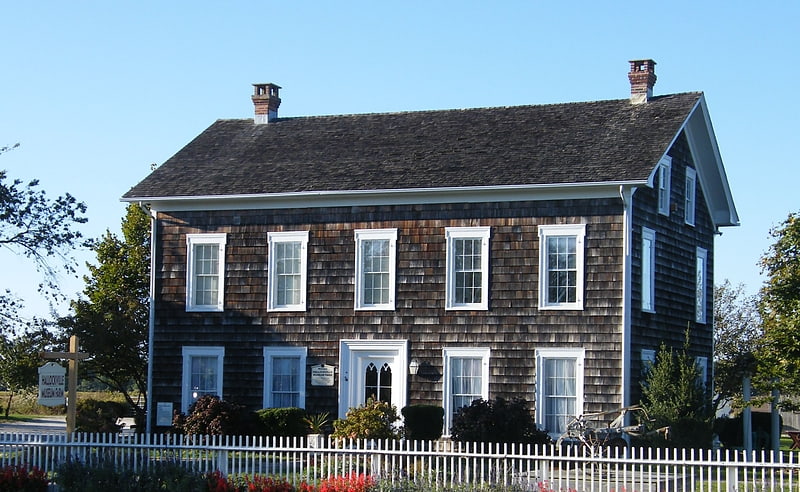
Building. Hallock Homestead is a historic farm complex located at Northville in Suffolk County, New York. The farmstead includes five contributing buildings: the main house, barn, milk house, shop / wood house, and privy. The farmhouse was originally built in 1765 as a one-story, five bay structure with a central chimney. In 1833, a small room was added to the west side and in 1845, the original dwelling was raised to two stories and capped with a broad gable roof.
It was added to the National Register of Historic Places in 1984.[6]
Suffolk County Sheriff's Office
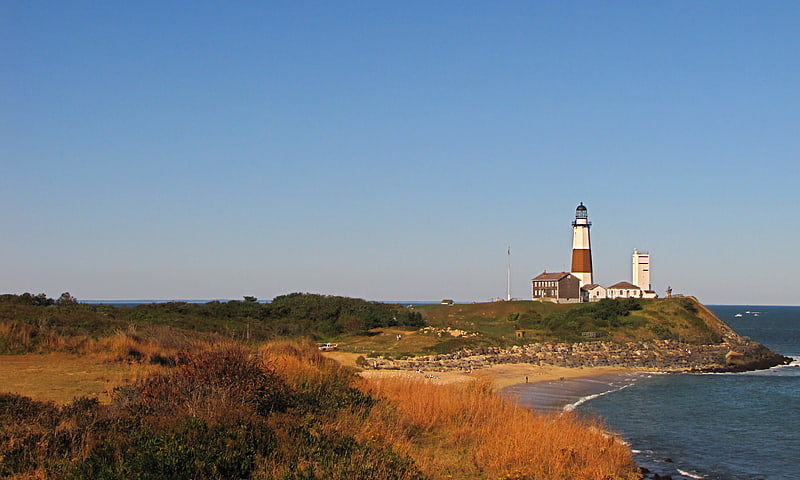
County in New York State. Suffolk County is the easternmost county in the U.S. state of New York. It is mainly located on the eastern end of Long Island, however there are several islands that are also part of Suffolk County. According to the 2020 United States census, the county's population was 1,525,920 making it the fourth-most populous county in New York State, after New York City's Brooklyn, Queens, and Manhattan. Its county seat is Riverhead, though most county offices are in Hauppauge. The county was named after the county of Suffolk in England, from where its earliest European settlers came.
Suffolk County incorporates the easternmost extreme of the New York City metropolitan area. The geographically largest of Long Island's four counties and the second-largest of 62 counties in New York State, Suffolk measures 86 miles (138 km) in length and 26 miles (42 km) in width at its widest (including water). Most of the island is near sea level, with over 1,000 miles of coastline.
Like other parts of Long Island, the high population density and relative closeness to New York City means that the economy has a mix of industry and science satellite to the city alongside more rural activities like agriculture, a fishery and tourism. Major scientific research facilities in Suffolk County include Brookhaven National Laboratory in Upton, Cold Spring Harbor Laboratory in Huntington, and Plum Island Animal Disease Center on Plum Island. The county is also home to several major universities such as Stony Brook University and Farmingdale State College.[7]
Suffolk County Historical Society Building
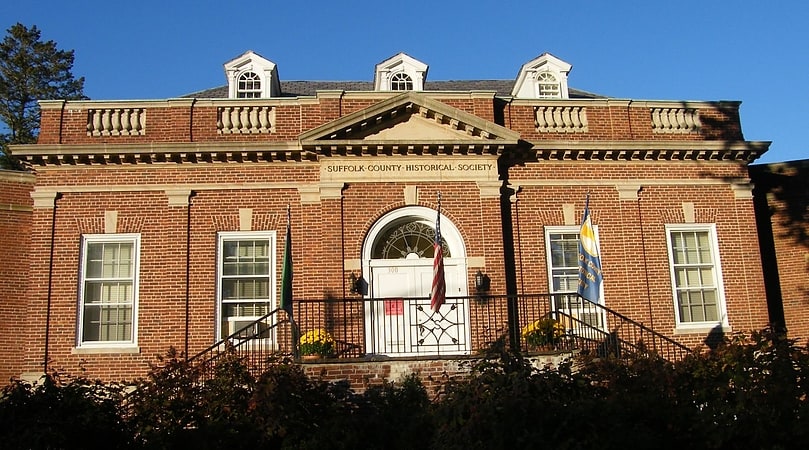
Museum in Riverhead, New York. Suffolk County Historical Society Building is a museum and library dedicated to preserving historic artifacts of Suffolk County, New York, as well as other parts of Long Island. It is located at 300 West Main Street as well as Osborn Avenue and Court Street in Riverhead, New York.
Though the museum building itself has only been around since 1930, the Suffolk County Historical Society was established in 1886 by residents of the county who were concerned about preserving its heritage. Riverhead was chosen as the location of the new society because it's the County Seat of Suffolk County, and County Surrogate Judge James H. Tuthill became the first President. The society began collecting items almost immediately, and the first displays were placed in a small glass case in Tuthill's Riverhead office. Unfortunately, the collection soon outgrew the Judge's office, and in 1893 a small building at the corner of Griffing Avenue and Main Street in Riverhead, which formerly housed the County Clerk's Office, was purchased. Eventually, the growing collection of documents and artifacts outgrew that space too.
The building was designed by August Galow with Colonial Revival styling. It was built on land donated by Alice O. Perkins, the widow of prominent Riverhead resident John Perkins during the 1920s, and was completed in 1930. Extensions were added in 1951 and 1964.
The library boasts more than 20,000 volumes and over 840 cubic feet (24 m3) of manuscripts, including records, ledgers, diaries, maps, atlases, post cards, newspapers, and other paperwork. In 1994, the building was listed on the National Register of Historic Places.[8]
United States Post Office

Post office. Riverhead Post Office is a United States post office located at 1210 West Main Street in Riverhead, New York. It serves the ZIP code 11901, covering all of Riverhead, along with Roanoke, Reeves Park, Centerville, northern Jamesport, and northwestern Laurel.
The old Riverhead Post Office was designed by Louis A. Simon who was Supervising Architect for the United States Treasury Department. Simon also designed the Post Office buildings in Bay Shore, Northport, and Westhampton Beach. According to the Riverhead Town Historian, the land for the Post Office was purchased in 1932, with the building erected in 1935 and dedicated in November of that year. The post office was a depression-era public works project. It is built in a simplified Colonial Revival style.
As with Patchogue and Smithtown's Village of the Branch, Riverhead Post Office was known as a source for obscure postal denominations by Long Island-based stamp collectors. The building was added to the National Register of Historic Places in 1989.[9]